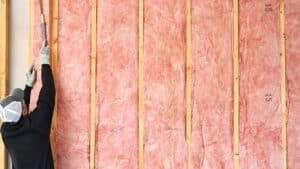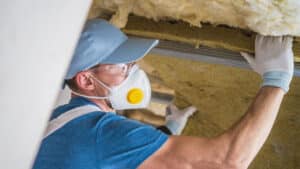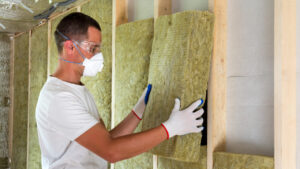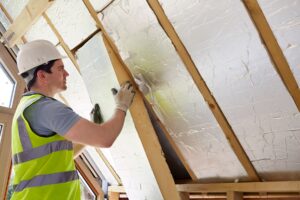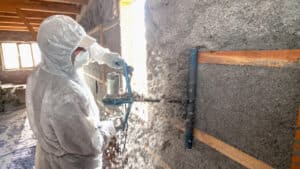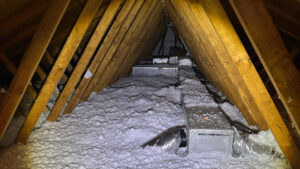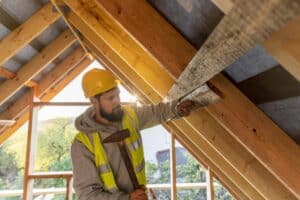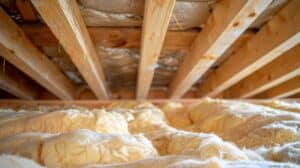Feel too cold inside during winter, even with a fireplace and heater? Too hot in the summer, even with the AC on full blast? It might be because your home doesn’t have enough insulation. If you’re not into science stuff, here’s the deal: heat likes to move to colder places. So, in winter, your cozy warmth tries to escape outside, and in summer, outside heat tries to get in.
Good insulation helps by stopping too much heat from moving in or out. It makes an extra wall between the inside and outside of your home. Blown-in cellulose insulation is one way to do this, especially if your home doesn’t have enough insulation.
This kind of insulation works well if you want to add more insulation to your attic.
Keep reading to find out how blown-in cellulose insulation works, how to put it in, and the good and not-so-good things about using it.
What Is Blown-In Cellulose Insulation?

Blown-in cellulose insulation is a kind of insulation used in homes and businesses, and it’s created from plant materials.
Typically, it’s made from wood and recycled paper items like newspapers, cardboard, and office paper. Even though it’s dense and lumpy, it works well because it’s made up of lots of recycled bits. This allows it to go into tight spaces and shape around pipes and ducts in the areas that need insulation.
Benefits of Blown-In Attic Insulation
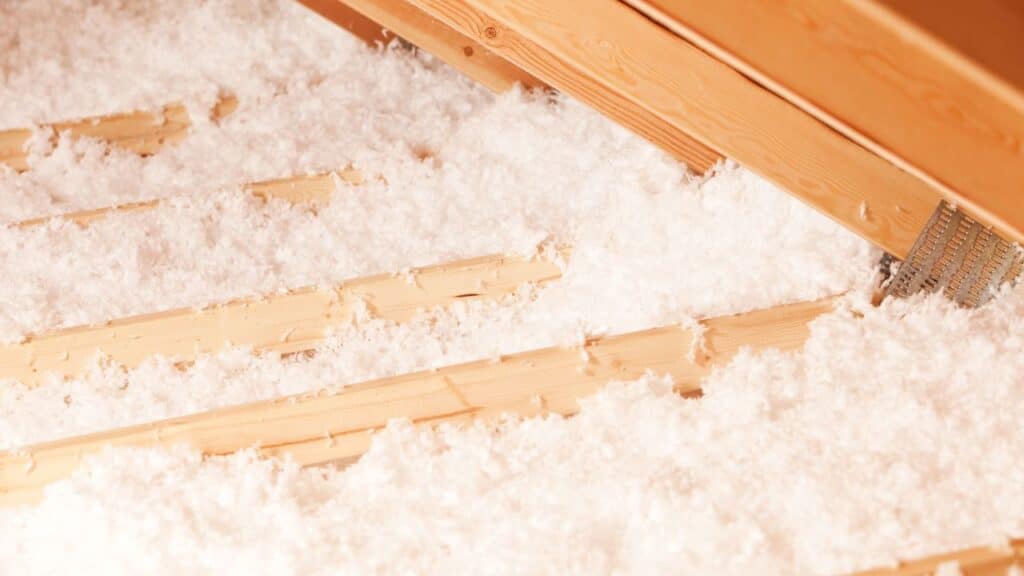
Blown-in attic insulation is effective in trapping warmth inside your home during winter and blocking excessive heat during summer.
Moreover, homeowners should be aware of additional advantages:
– The insulation preserves the warmth generated by your heater in winter, minimizing the workload on your AC and heater units. This results in significant energy bill savings.
– Certain insulation types, such as fiberglass, offer complete fireproofing.
– Installation is simple and swift with the right blower.
– Fiberglass and cellulose insulation can also provide soundproofing for your attic.
– Blown-in insulation helps reduce condensation by regulating the temperature in your attic.
– It effectively reaches and covers tight nooks and crannies within your attic for thorough insulation coverage.
Blown-In Attic Insulation Pros and Cons
While there are evident advantages to using blown-in attic insulation for homeowners, it’s crucial to consider key pros and cons. Let’s explore some of them:
Pros:
– Blown-in attic insulation can be applied in narrow or small spaces where rolled-up batt insulation may not fit. It efficiently fills gaps between heaters and AC units in the attic, optimizing space utilization.
– Insulation designed for blown-in purposes is cost-effective without compromising the R-value or the insulation’s resistance to conductive heat flow.
– Borates-treated insulation helps prevent insects and vermin from inhabiting the attic. We use a special blend we designed called Pest-Guard which is extremely popular across Hampton Roads for keeping insects from burrowing.
– Blown-in attic insulation can easily be added on top of existing insulation or used to reinforce already insulated areas.
Cons:
– Installation of blown-in insulation can be messy and typically requires professional assistance unless you have experience in the field.
– Overloading insulation in one area may lead to the ceiling sagging.
– Thorough air sealing and the installation of soffit venting may be necessary.
– If blowing cellulose over existing fiberglass, it may be required to cut and refit poorly laid batts and insulate plumbing first.
– Blown-in insulation is susceptible to mold and rot if exposed to excessive moisture over an extended period, emphasizing the importance of sealing the area before installation.
Types of Blown-In Attic Insulation
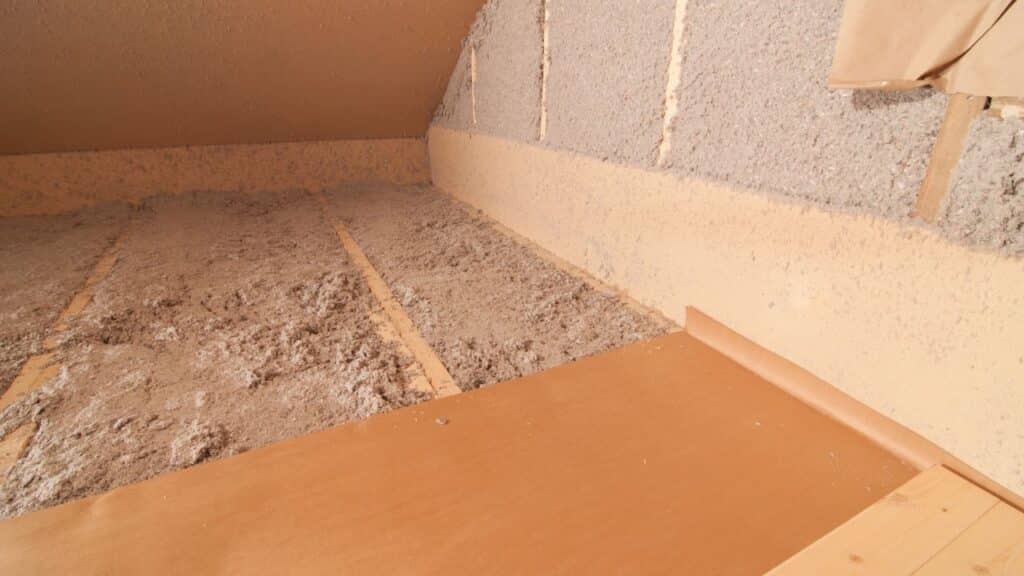
Having explored the pros and cons of blown-in attic insulation, let’s now delve into the two common types of insulation homeowners typically use for attic insulation: cellulose and fiberglass.
Blown-In in Cellulose Insulation
Comprising recycled paper, cellulose insulation is a budget-friendly choice for homeowners. It incorporates borate, providing resistance to both fire and insects.
With an R-value of approximately 3.5 to 3.8, cellulose insulation tends to maintain its thickness well when correctly applied. For instance, if you blow in around 10 inches of cellulose insulation, it will retain this thickness for an extended period.
Although cellulose insulation is generally irritant-free, it’s advisable to wear safety gloves and goggles when blowing it into your attic.
Blown-In in Fiberglass Insulation
Fiberglass is another commonly used blown-in attic insulation material, often chosen for its cost-effectiveness compared to other options. It boasts an R-value ranging from approximately 2.2 to 2.9 per inch.
Certain fiberglass insulation varieties incorporate up to 53% recycled glass, a feature that minimizes settling after installation. Additionally, this composition enhances its fire resistance, contributing to a safer attic environment.
Blown-In Cellulose vs. Other Types of Insulation
Blown-in cellulose insulation is the most popular choice among our customers in Hampton Roads for insulating already-closed-off walls without undertaking a full remodeling project. While patching and painting are still necessary with blown-in insulation, it proves to be a significantly easier option than completely removing drywall for the installation of roll or batt insulation.
For open and unfinished walls, other insulation types may be more suitable, such as fiberglass roll insulation or fiberglass batts. In attics, blown-in cellulose emerges as one of the top choices, given the challenging-to-reach areas and numerous obstructions typical in ceilings. Many homeowners opt for a combination of blown-in and batt insulation in attics to establish a more comprehensive and effective insulated barrier for their homes.
How Much Does Blown-In Attic Insulation Cost?
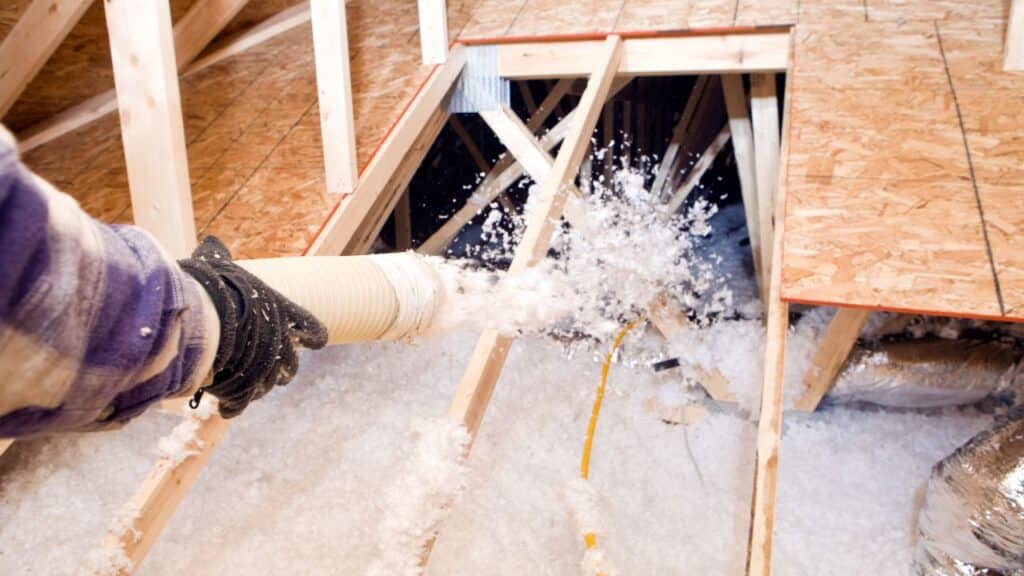
Determining the budget for blown-in attic insulation can be challenging as it depends on several factors, including:
– What you want the ending R-Value to be in your Virginia beach home. Since we are in climate 4 an R-value of 19 is the minimum
– The size of your attic and specific areas requiring insulation.
– The material you choose for insulation.
– Labor and professional equipment expenses.
The cost of installing blown-in attic insulation typically ranges from $1,500 to $3,000 for around 1000 square feet of attic space.
On average, we see Hampton Roads homes comfortable with an R-value of approximately 30, equivalent to 10 to 14 inches of total insulation for their attics and thinner for their interior walls.
Is Blown-In Attic Insulation Worth It?
Yes, blown-in attic insulation is a worthwhile investment. This is because it:
– Improve Energy Efficiency: Blown-in insulation helps prevent heat loss in winter and heat gain in summer, easing the load on your heating and cooling system. This can lead to lower energy bills and a more comfortable indoor temperature.
– Increase Comfort: Attic insulation regulates the home’s temperature, minimizing hot and cold spots, and enhancing overall comfort.
– Increase Home Value: A well-insulated attic boosts energy efficiency, making your home more appealing to potential buyers and increasing its resale value.
– Reduce Noise: Attic insulation contributes to noise reduction, creating a quieter and more peaceful home environment.
– Protect Your Home: Insulating the attic safeguards your home from moisture damage, lowering the risk of mold and mildew growth, and preserving the structural integrity.
Considering these benefits, the upfront cost of purchasing and installing blown-in insulation is often justified by the long-term advantages.
The only situations where it may not be worthwhile are when the existing attic insulation is sufficient, doesn’t require replacement or supplementation, and if the homeowner is planning to move soon and won’t fully experience the long-term benefits of the investment.
Factors such as the home’s age, type, and current energy bills should be considered to determine if blown-in attic insulation is a sensible investment. Seeking advice from a professional energy auditor or contractor like us can provide a more tailored assessment.
Budgeting for Blown-In Attic Insulation
Wondering about the budget for installing blown-in attic insulation?
Start by checking the recommended R-value for your attic, as this guides the type and quantity of insulation needed for adequate coverage.
Next, consider the labor costs associated with blown-in attic insulation installation.
For a project requiring professional expertise and equipment, it’s advisable to engage a qualified contractor or insulation company to manage the work.
Get an Attic Inspection
We advise getting an attic inspection before purchasing materials.
Given that attics are often overlooked, potential issues like poor air sealing, ventilation problems, and air quality concerns might be lurking. Attic inspectors are adept at identifying such issues and can guide you on the insulation requirements based on various factors.
Contact Universal Insulation Doctor for Trusted and Quality Service!
Universal Insulation Doctor is here to simplify the process for you. Our friendly experts can guide you through every step, helping you choose the right insulation for a warmer and more energy-efficient home.
Reach out to us today to get started on making your attic the cozy space it should be. Your comfort matters to us!
Frequently Ask Questions!
How long does Blown in Attic Insulation last?
The lifespan of blown-in attic insulation depends on various factors, including the type of insulation material used, the quality of installation, and environmental conditions.
On average, blown-in insulation can last for several decades. Fiberglass and cellulose, two common materials used for blown-in insulation, are durable and can maintain their effectiveness for 20 to 30 years or more. However, it's essential to consider that factors such as moisture exposure, pest infestations, or physical damage can affect the longevity of insulation.
Regular inspections of your attic, addressing any issues promptly, and ensuring proper ventilation can contribute to the prolonged effectiveness of blown-in attic insulation. If you have concerns about the condition of your insulation, it's advisable to consult with a professional to assess whether replacement or supplementation is necessary.
What is the best Blown in Insulation for Attic?
The best type of blown-in insulation for your Hampton Road's attic has a minimum R-value of 19. Two common types of blown-in insulation are fiberglass and cellulose, each with its own set of advantages can get you there and beyond:
- Fiberglass Insulation: Fiberglass is a popular choice due to its cost-effectiveness and fire resistance. It is made from recycled glass and has a good R-value, indicating its insulating efficiency. Fiberglass insulation is also resistant to moisture, which can be beneficial in an attic environment.
- Cellulose Insulation: Cellulose is made from recycled paper and treated with fire-retardant chemicals, making it resistant to fire and insects. It has a slightly higher R-value compared to fiberglass. Cellulose insulation is eco-friendly and can be a good choice for those looking for sustainable options.
Both fiberglass and cellulose insulation can be effective in attics, but the best choice depends on factors such as local climate, budget considerations, and personal preferences. It's recommended to consult with insulation professionals or contractors who can assess your specific needs and provide tailored recommendations based on your situation.
Can I install Blown-in Insulation myself?
While it is possible to install blown-in insulation as a DIY project, there are several considerations and challenges to keep in mind. Here are some key factors to consider:
- Equipment: Blown-in insulation requires specific equipment, such as a blowing machine, to distribute the insulation evenly. Renting or purchasing this equipment can add to the overall cost.
- Safety: Handling insulation materials can be hazardous to your health. It's crucial to use appropriate personal protective equipment (PPE) such as gloves, a mask, and goggles to avoid skin irritation and respiratory issues.
- Skill and Experience: Proper installation requires knowledge of the insulation material, the equipment, and the specific techniques to achieve effective coverage. Lack of experience may result in uneven insulation and reduced effectiveness.
- Access and Obstacles: Attics can have challenging layouts with obstacles such as ducts, wiring, and other structures. Navigating these obstacles while ensuring complete coverage can be challenging for inexperienced individuals.
- Building Codes: Local building codes may have specific requirements for insulation installation. It's important to be aware of and comply with these codes to ensure a safe and effective installation.
Is Blown-in Insulation eco-friendly?
Blown-in insulation is usually environmentally friendly. Fiberglass is made from recycled glass and is energy-efficient. Cellulose is made from recycled paper and is considered eco-friendly. Both help save energy in homes. Remember to choose insulation with higher R-values for better efficiency.
Is Blown-in Insulation the best type of insulation?
Blown-in insulation is a good option for many homes because it fills spaces well and is cost-effective. However, the best type depends on your home and budget. Other options like batts, spray foam, and rigid foam also have their advantages. Consider your needs and get advice from professionals for the best choice.

